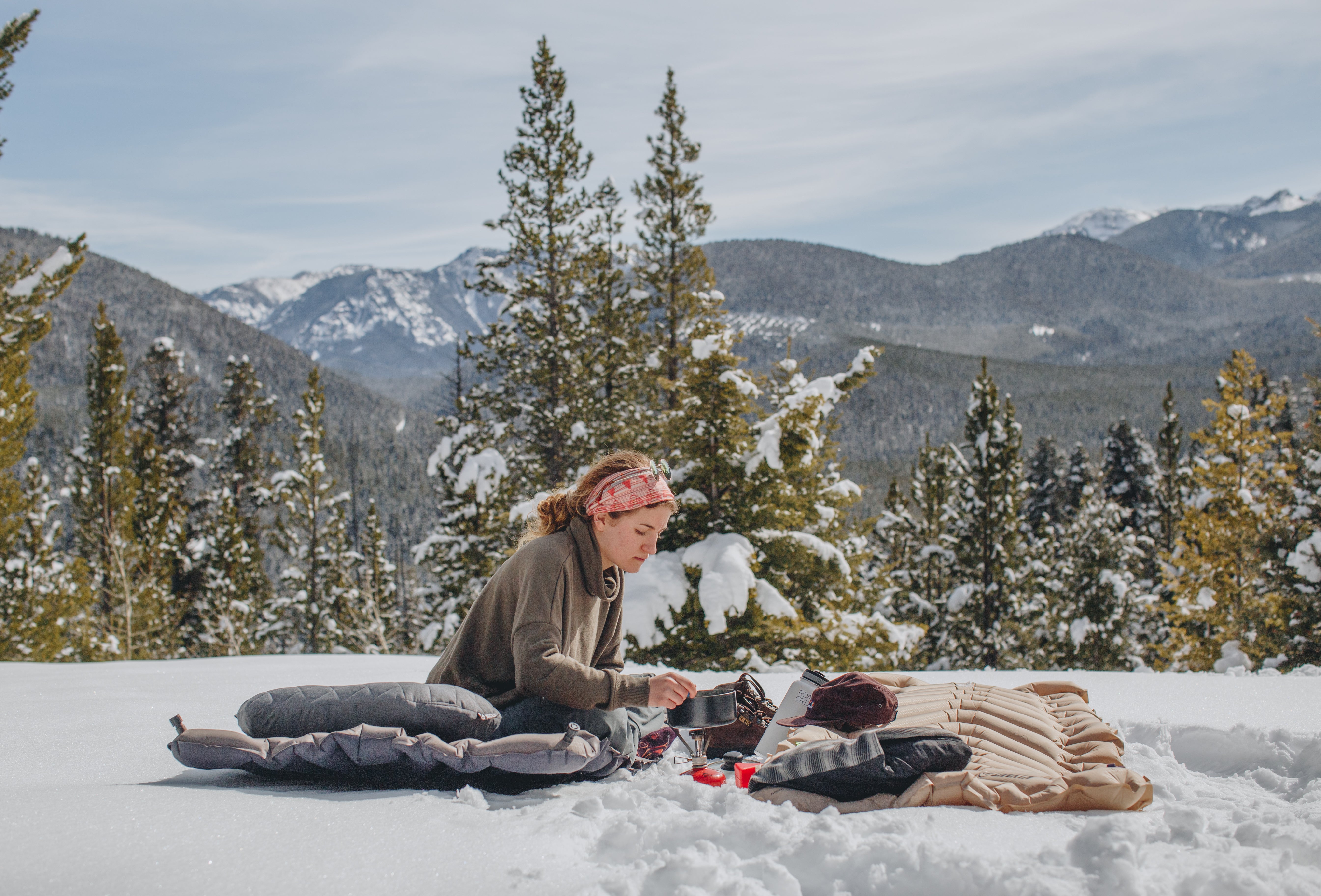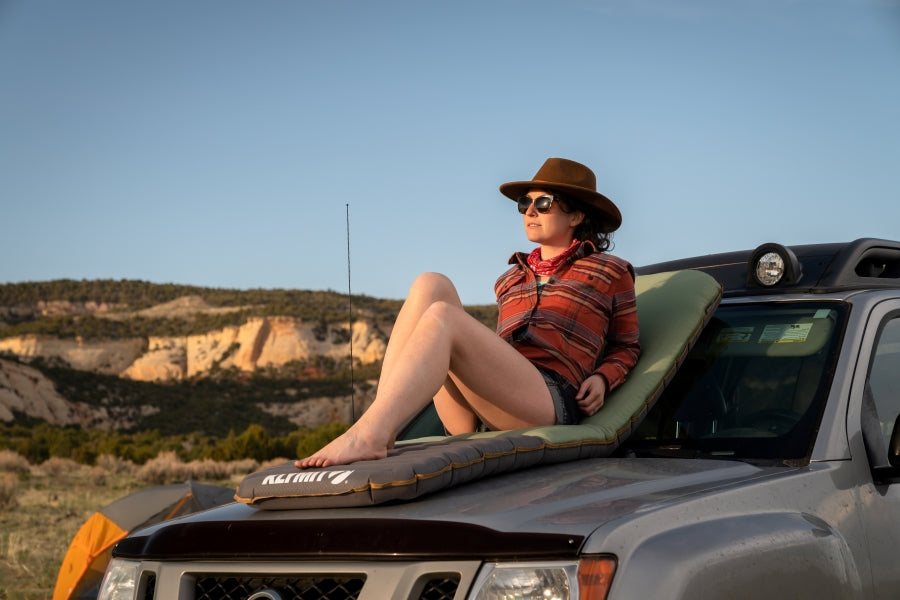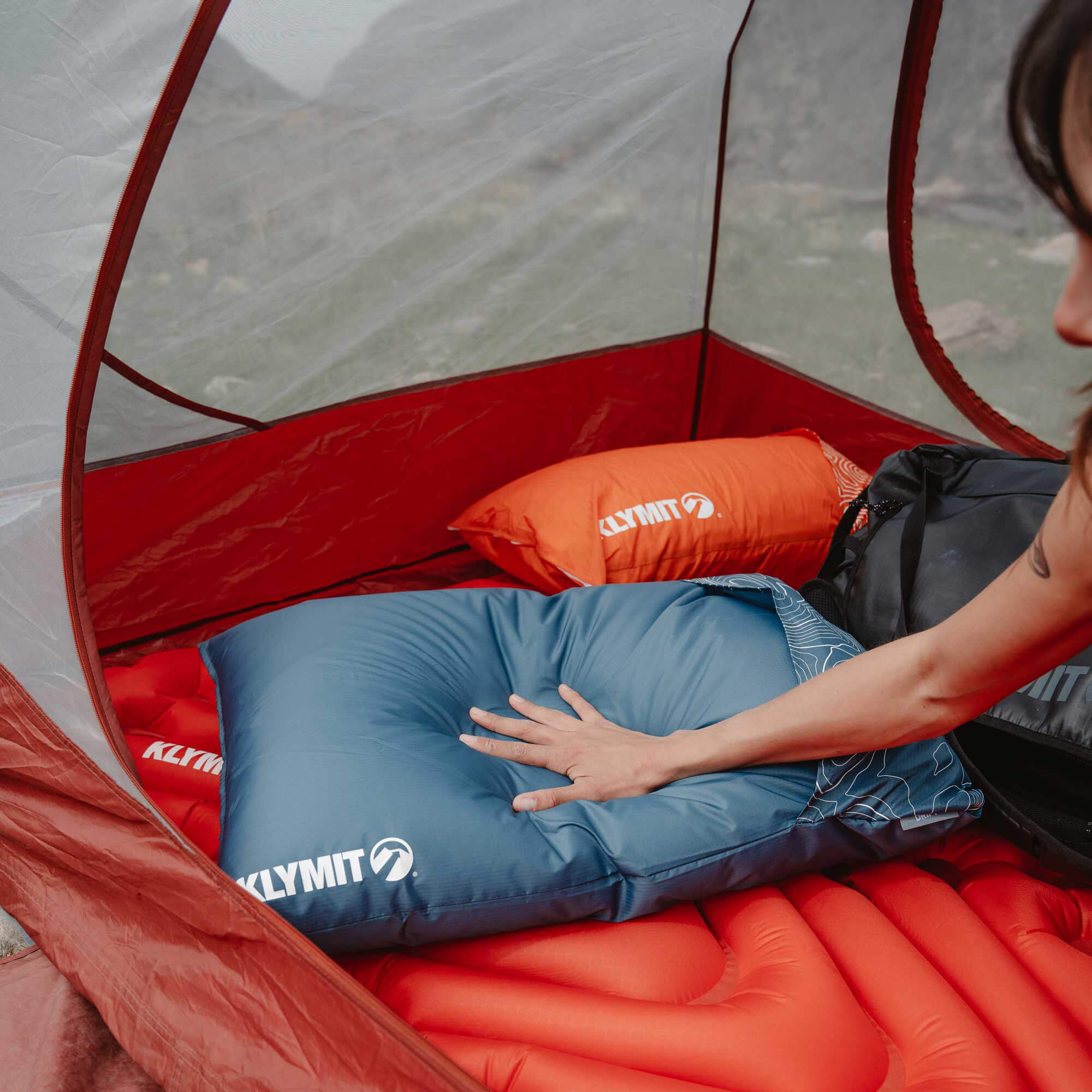Sleeping outside isn’t only for the summer months. Winter camping can be a great way to escape the crowds, participate in fun winter activities, and take in beautiful views of snow covered landscapes. We’ve put together tips and tricks for preparing for your first cold weather camping trip.
Cold Weather Gear
Winter camping gear looks a little bit different than warm weather camping. Not only do you want extra things like something to brush moisture off your tent and an insulated stainless steel water bottle, but you also need to make sure that you have weather appropriate sleeping gear.
It’s important to have something to get you off the cold ground. Such as a cot or insulated pad, or preferably, a combination of both. Klymit’s Insulated Static V Lite or Insulated Static V are great choices for lighter weight setups, while The Insulated Static V Luxe SL and the Insulated Static V Luxe are ideal pads for trailers and car camping trips.
Sleeping bags make or break a good night’s sleep in cooler weather. It’s important to match the sleeping bag with the temperature you are going to be in. If you’re too hot, you may sweat and consequently get cold. If you don’t have enough insulation in your sleeping bag, you could get cold in the middle of the night. Klymit’s options for 0 degree sleeping bags include the KSB 0, which offers a combination of down and synthetic insulation and the synthetic Wild Aspen 0.
Weather
It’s extremely important to check the forecast before heading out to camp in cooler weather. Cold weather brings extreme risks like frostbite and hypothermia, so it’s important to prepare correctly for whatever the weather may bring. Note precipitation chance percentages, humidity, and sunset and sunrise times.
Weather
When dealing with cooler, damper temperatures, synthetic or wool materials are the best way to stay dry and warm. Pack plenty of layers including underwear, socks, base layers, puffy jackets, and more. Accessories are also important to keep extremities covered because your body will naturally keep your core warm. Your hands and feet need extra attention. Don’t forget hats, neck gaiters, and mittens!
Additional Tips for Staying Warm While Sleeping Outside
Store your socks, boot liners, and gloves inside your sleeping bag overnight. This helps keep those items warm for the next chilly morning. If your tent has extra room and air space around your pad and sleeping bag, you can store gear inside your tent to create extra insulation. Specifically, be aware of corners of the tent, as well as where the tent walls connect to the tent floor. Your breath creates more moisture than you think. Refrain from sticking your head inside your sleeping bag while sleeping, because it can cause a build up of condensation inside your sleeping bag. Which will in turn create a damp environment prone to freezing. It can be easy to simply wear your tight base layers to bed, but it’s a better idea to wear loose clothing while you sleep. Tighter items of clothing can prevent air from insulating your body. Instead of wearing multiple layers that lie close to your body, try wearing one loose layer to create an insulation layer of air in between you and your sleeping bag. But don’t forget to wear a beanie to keep your head warm. Having trouble staying warm even after following the proper sleeping protocol? Boil water, store it in a stainless steel bottle, and keep it inside your sleeping bag to get a head start on heating up your sleeping bag. Cold weather camping may seem intimidating, but with the right gear and the right mindset, you can make this into a fun adventure. Have you ever wanted to cold-weather camp? Tell us where you would like to go!






